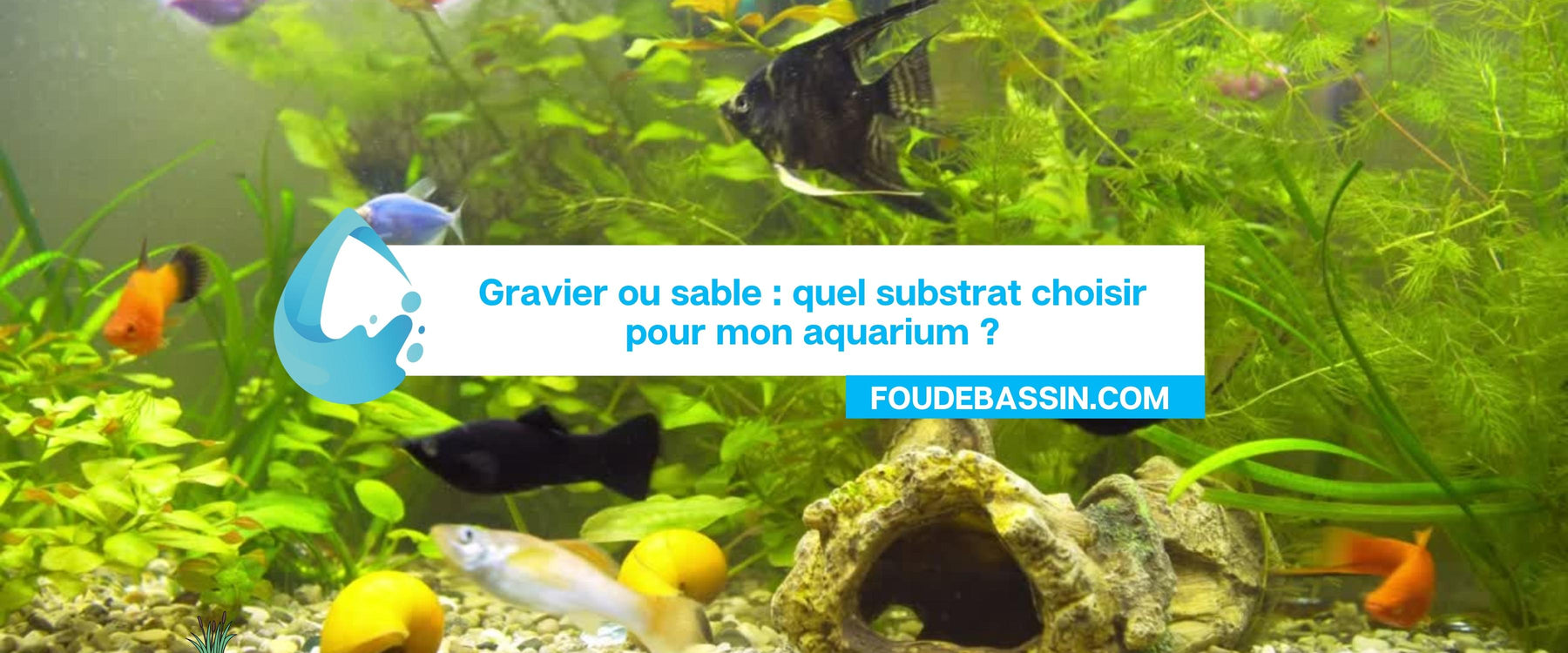Retrouvez ici les indispensables et meilleures ventes pour nos propriétaires de bassin.
Retrouvez ici les indispensables et meilleures ventes pour nos propriétaires de bassin.

Although there are a wide variety of options for lining the bottom of your aquarium, most aquarists opt for gravel or sand. In this article, you will discover the differences between bottoms made of sand and gravel, but also the advantages and disadvantages of these two substrates.
To design a zen and calm space, sand is always a preferred option for an aquarium. In addition to being super aesthetic, it gives a very natural look to the jar. Sand can be found at all pet and aquarium stores.
What's more, sand comes in a variety of shades of color and thickness. Finally, most types of sand are inert and do not impact water parameters, unlike some gravels and rocks.
Good to know: sand is the best option for snails, crabs and fish that like to bury themselves.
The main advantage of sand is its smooth appearance and natural finish.
The sand also keeps debris and trash from sinking into your substrate.
Does your aquarium house freshwater invertebrates , cichlids or burrowing fish like Kuhli loaches? So, we advise you to choose sand as a substrate!
Sand is not the ideal substrate for all aquariums. Indeed, certain limits are imposed on him when used in freshwater aquariums. The small diameter of the sand grains prevents water from flowing through your substrate. This creates dead zones in your aquarium, areas where all the oxygen has been depleted.
If you are considering a planted aquarium, sand should be avoided. Many aquatic plants have shallow roots that cannot grow from sand…
Gravel is the most common type of aquarium substrate and is an ideal product for most freshwater aquariums. With a gravel bottom, you have a wide variety of choices in terms of size, color and composition. Eventually, the gravel can be almost as fine as sand or come in the form of a set of pebbles to be placed at the bottom of your aquarium.
Gravel is popular with freshwater aquarists for several reasons. First, it's perfect for raising almost any freshwater fish and most invertebrates. Gravel is also the ideal choice for growing aquatic plants, as it allows the roots to absorb nutrients from the water flowing through the substrate.
Finally, it is easier to maintain a planted gravel aquarium than a sandy bottom aquarium. Additionally, gravel aquariums encourage colonies of bacteria and other ammonia-eating microorganisms to grow throughout the substrate. They break down waste and help maintain a healthy ecosystem in your aquarium.
There aren't many downsides to using gravel in your freshwater aquarium. The main disadvantage is that these substrates also make it more difficult to eliminate toxic blue algae in the event of an outbreak. Sandy substrates usually limit these blooms to the surface layer because water cannot flow through the small sand particles.
Difficult to give you a ready-made answer! The type of substrate depends a lot on your fish population and plant species. But once you have chosen between gravel or sand, it will not necessarily be easy to retrace your steps. A population of fish, accustomed to a substrate, will not easily accept changes. To avoid any problems, choose the substrate that best suits the fish and plants in your aquarium according to their type!
Aquipond Greenstab - Natural treatment against pond algae It is a natural product that helps limit algae at any time. It also has a prevent...
View full detailsReduces the layer of silt in the pond by at least 40% Easy to use with less impact on biodiversity Prevents fermentation, bad odors. pH ...
View full detailsOrganic dye to block plant growth by limiting photosynthesis ORGANIC PRODUCT NON TOXIC TO HUMANS (DIVING) AND FISH. 100% NATURAL AND BIODE...
View full detailsThe positive effects of barley straw have been known to water enthusiasts for a long time. But currently barley straw is difficult to find and i...
View full detailsReduces at least 40% of the layer of silt in the pond Easy to use with less impact on biodiversity Prevents fermentation, bad odors. ...
View full details
Leave a comment